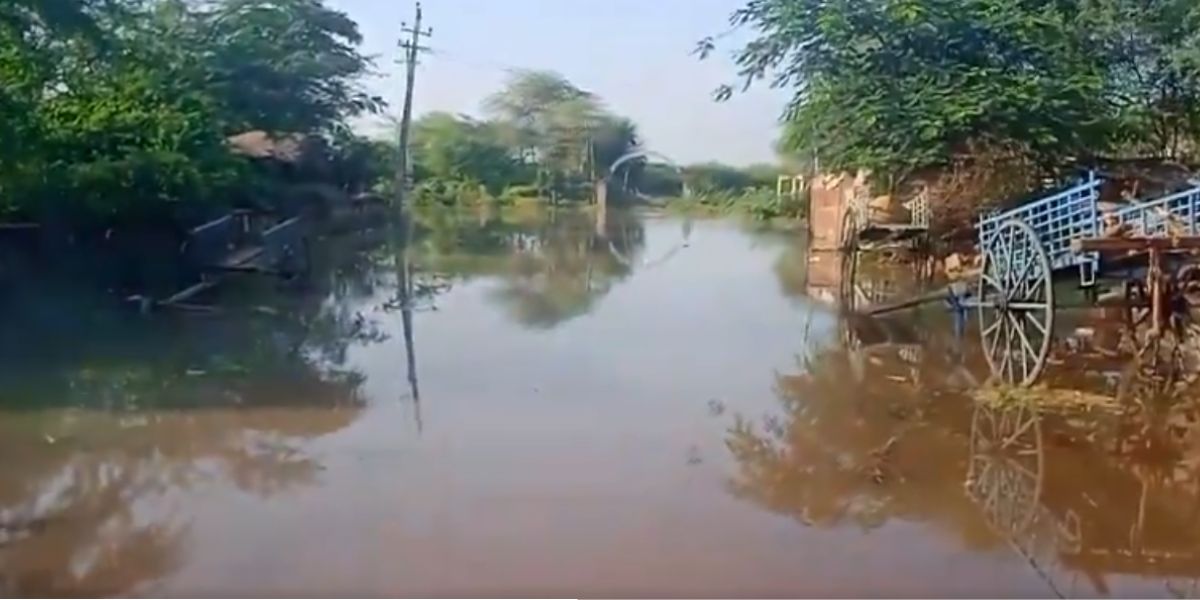The local authorities are closely monitoring the situation in the midst of rising water levels in Hebballi village and surrounding areas in Badami.
Published Oct 14, 2024 | 3:10 PM ⚊ Updated Oct 14, 2024 | 3:10 PM

Flooding situation along Malaprabha river in Karnataka.
Villages along the Malaprabha River in the Bagalkot district in Karnataka are at risk of flooding on Monday, 14 October, due to heavy rains in the region.
The ongoing rainfall in the Bagalkot district has led to severe flooding, with the Malaprabha River flowing at alarming levels, inundating hundreds of acres and affecting local agriculture.
Water has reached the outskirts of Hebballi village in Badami, submerging crops in the area. Land adjacent to the river is fully flooded, impacting the livelihoods of local farmers.
The local authorities are closely monitoring the situation in the midst of rising water levels in Hebballi village and surrounding areas in Badami.
Incessant rainfall has resulted in the crop loss of hundreds of hectares in Belagavi, Bagalkot, Gadag, Koppal, Davanagere, Dharwad and Haveri districts. Maize, Onion, Sugarcane, Chilly, Paddy, Cotton, Toor dal, Sunflower and other major crops have been affected.
According to the Karnataka State Natural Disaster Monitoring Centre (KSNDMC), “In the last week, the state has received 51.5 percent excess rainfall. During the same period, the South region recorded 30 percent excess rain, the North 57 percent, Malnad 104 percent, and the Coastal region 101 percent.”
“In the last week, Haveri and Dharwad districts recorded 314 and 331 percent excess rain, respectively. Shivamogga, Belagavi and Davanagere reported over 200 percent excess rain. Bengaluru Urban, Bengaluru Rural, Kolar, Chikkaballapura, Raichur, Kalaburagi, and Yadgir recorded deficit rainfall,” KSNDMC said in a report.
The state recorded 15 percent excess rainfall since the onset of the South-West Monsoon. In the same period, Maland and Coastal regions recorded 13 and 20 percent excess rainfall, and North and South recorded 12 and 11 percent.
(Edited by Muhammed Fazil)
